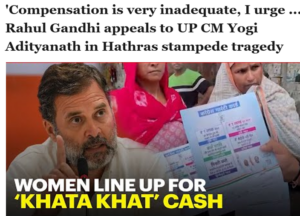
Uthiramerur, 30 km from Kanchipuram is 1250 years old.
The village named Uthiramerur, 30 km from the famous Kanchipuram of Tamil Nadu, is about 1250 years old. The village had a model electoral system and a written constitution prescribing the manner of election. It is one of the oldest temples of democracy.
Vaikuntha Perumal Temple is located in Kanchipuram, Tamil Nadu.
On the platform wall of the Vaikuntha Perumal (Vishnu) temple here, state edicts of the Chola dynasty are recorded during the year 920 AD. Many of these provisions are also in the existing Model Election Code. It was inscribed on the walls of the gram sabha, a rectangular structure made of granite slabs.
Another example of the strength of democracy at the local level in Indian history is written on the walls of Utthiramerur in Kancheepuram district, the constitution of the gram sabha system prevalent in the middle of the seventh century, in it the qualifications required to contest elections, the method of election, the candidates selected. There is also a discussion of the term of office, the conditions for the disqualification of the candidates and the people’s authority under which the people could recall their people’s representatives. If these public representatives did not discharge their responsibilities properly.
The Pallava dynasty sculptures of Vaikuntha Perumal temple and several inscriptions have helped the historians of South India to write about all the events of the ancient Pallava history and fix the chronology of this dynasty.
About 25 inscriptions, spanning the reign of the Pallava kings, have been found at Uthiramerur. The Uttaramerur inscription of Parantaka I of 921 AD has been obtained from a place called Uttaramerur located in Kanchipuram district of Tamil Nadu state of India. The Uttaramerur inscription of Parantaka I gives information about local self-government during the time of the ruler of the Chola dynasty.
According to the Uttaramerur inscription, during the reign of the Chola dynasty, grants of land were given to Brahmins in India whose administrative responsibilities were discharged by the village itself.
During the reign of the Chola dynasty, villages in India were divided into 30 wards.
This committee of 30 wards or members was called sabha or ur in India during the reign of Chola dynasty.
During the rule of the Chola dynasty, some qualifications were necessary to become a member of the committee in India, such as-
* To become a member, it was necessary to have at least 1½ acres of land.
* To become a member, it was necessary to have one’s own house.
* To become a member it was necessary to have knowledge of Vedas.
* The one who wanted to become a member himself and his family and none of his friends should be of criminal nature.
* The age limit for becoming a member was from 35 years to 70 years.
* A person could become a member only once.
* Used to get the children selected by lottery to become members.
Candidates are selected by kudavoloi (literally, palm leaves [टिकट] pots of [का]) was done through the system:
Names of eligible candidates were written on palm leaf tickets
Stamps are put into a pot and shuffled
A young boy was asked to draw as many tickets as there were positions
The name on the ticket was read by all the priests
The candidate whose name is read out is selected
The tenure of a member of the committee was 360 days. Anyone found guilty of a crime was immediately removed from office.
The one who got the most votes was elected a member of the Gram Sabha. Not only this, the person who commits family adultery or rape used to be disqualified from participating in elections for 7 generations.




